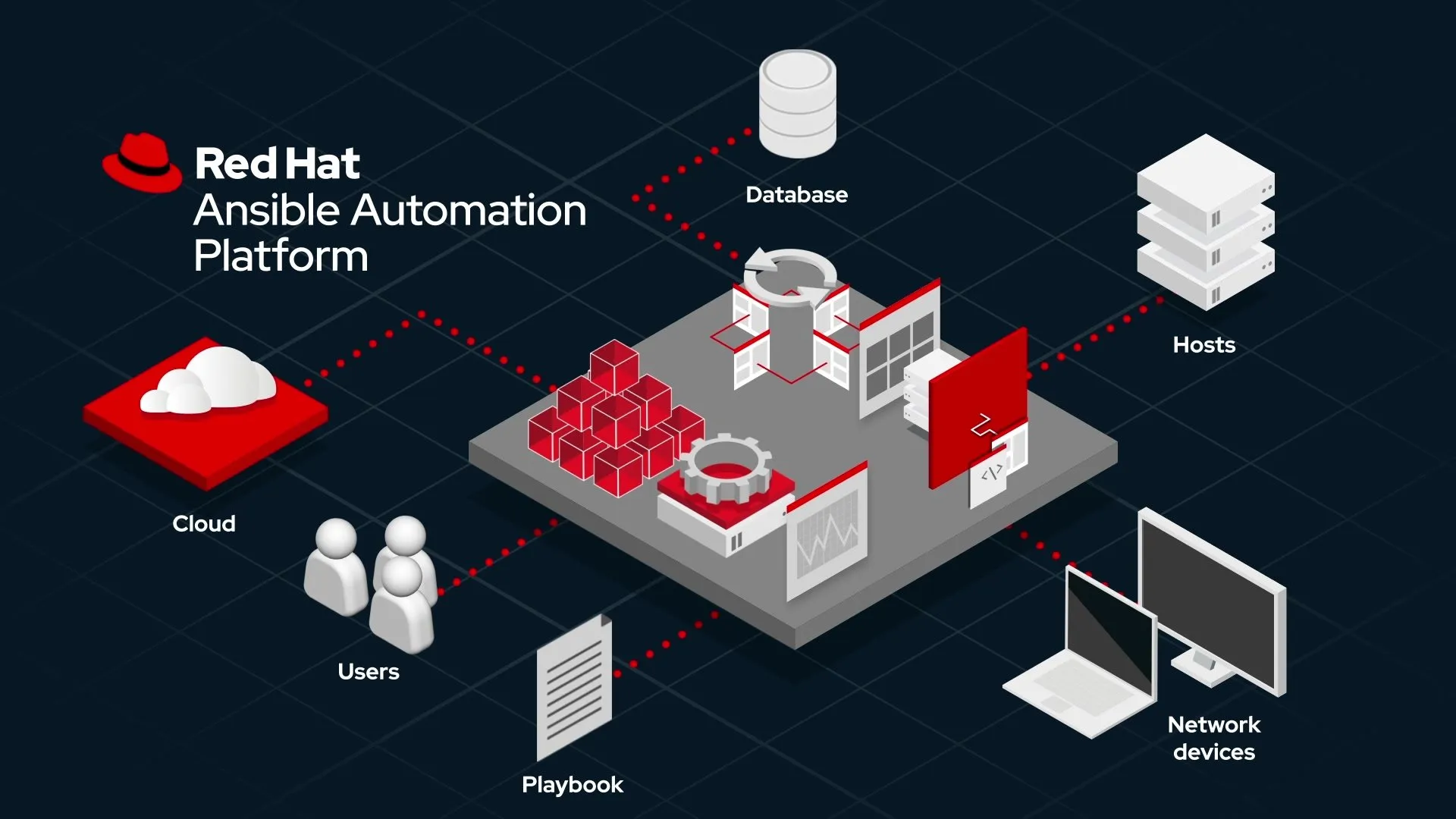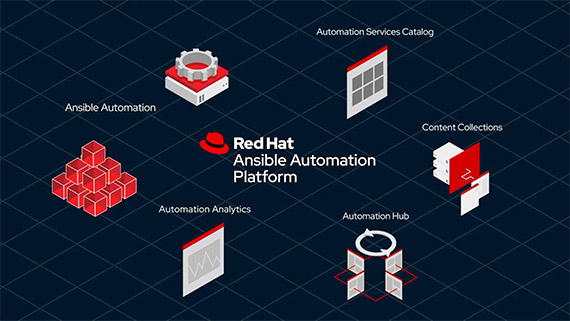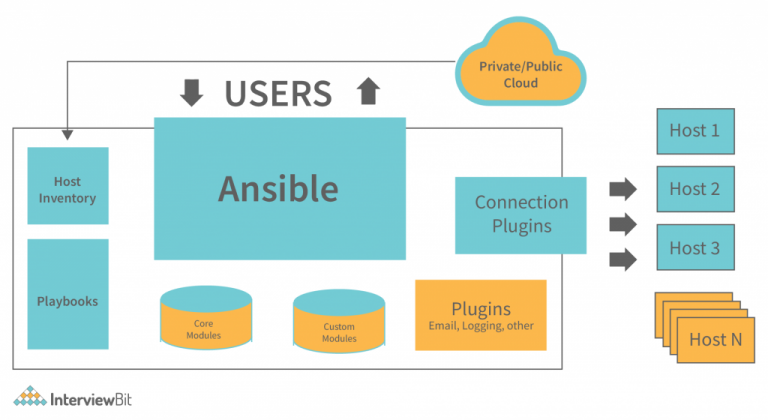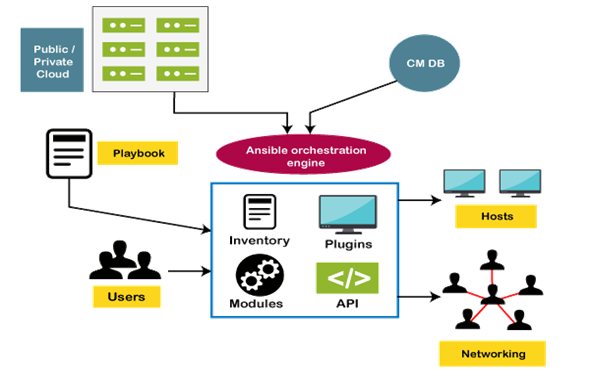Rayan Nik Tajhiz Company
Red Hat Ansible is a tool for managing and automating processes on Linux servers.

Red Hat Company has offered a management tool called Ansible to control and automatically manage the processes of Linux servers and clients. Initially, Ansible was an open-source tool that enabled the automation of all parts, such as provisioning, configuration management, settings, and deployment of applications in Linux and the cloud.
Ansible Automation Platform is a foundation for building and operating automation across an organization and centrally manages all Linux distributions. Besides helping to automate processes, this tool also allows development teams to solve problems in the shortest possible time.

An Introduction to Red Hat Ansible Features
Red Hat Ansible helps you with synchronizing tasks between Linux servers. Ansible Automation Platform is a foundation for building and operating automation across an organization and centrally manages all Linux distributions. Besides helping to automate processes, this tool also allows development teams to solve problems in the shortest possible time.
In Ansible, servers are controlled through SSH, and there is no need to install an Agent on any client system. By installing and configuring this tool on the main server, known as Control Node, you can manage other clients through SSH.
Ansible is a Remote Administration tool that enables a network administrator to manage and control other Linux servers comprehensively.
According to Red Hat, the main goal of designing and developing Ansible is to simplify the work with Linux servers and also increase the security and reliability of Linux servers. With automation, Ansible can provide its capabilities to a team to solve problems with just one click.
This tool can currently be installed and used on CentOS, Red Hat Enterprise, Debian, Ubuntu, and other standard distributions based on the mentioned Linux distributions.

The reason for developing Ansible by Red Hat
In the past, it was believed that Linux might not be subjected to cyberattacks, but recently its vulnerability has been observed, which requires everything to be updated quickly. The only tool in the world that can facilitate this process and do it automatically is Ansible.
When the number of Linux and CentOS servers increases, Ansible should be used for better management of these servers. We continue the discussion with an example to clarify the Ansible performance. When there are many Linux VMs with different distributions in the same organization, and we are using them, a warning is issued for all versions. If there is an update soon, there is a high possibility that they will be attacked by cyberattacks.
If Red Hat Ansible is not used, separate codes must be written for each server, and each VM must be updated separately. The problem with this mode is the long and complicated process. Meanwhile, imagine that a new warning for a new case arises, and a team has to focus on fixing and updating the servers again. This issue requires a lot of time and human resources and limits the central focus of technical teams for development. Therefore, the right solution is to implement policies on all servers.

An important point to know about Ansible is that it is Agentless; if we place a server for Ansible, there is no need to install an agent on each server.
In Ansible, to implement commands on each server, commands must be written and executed through the YAML language. All commands that are written and executed on individual servers through Ansible are written in a language called YAML.
To manage each server, technical teams need to learn the YAML codes for each of these commands and put them in Ansible, and implement them on each server and VM. The complication of this way is the increase in the number of YAML codes with the increase in the number of systems and their complexity. With this complexity, technical teams will face problems and cannot solve problems in a short time. Besides learning the YAML language, they should be familiar with the codes that exist in different fields.
Also, there are YAML codes on the Internet that people can use, but these ready-made commands that exist on the Internet have not been tested, and the possibility of mistakes in them is high. To solve this challenge, Red Hat has collected and tested all existing YAML codes and put them in a tool like Red Hat Ansible to reduce the concern of technical teams about the YAML language.
In the web menu of Red Hat Ansible, all the organization’s requirements for managing and automating processes are considered, such as installing or removing software on servers, updates, and so on. All these tested Yamel codes can be implemented in any operating system other than the Red Hat operating system.
What is Ansible Tower?
Red Hat Company developed the Ansible Tower system so that repetitive tasks can be executed and managed automatically. Ansible Tower allows you to fully monitor of your workflow status and work well with other parts of Ansible.

If you intend to do a series of tasks and execute them in a specific environment, you can implement and test your desired series of actions in Ansible Tower and run them in a real environment. Ansible Tower is a management tool that enables you to implement all the desired deployments along with the desired conditions and thus reduce all risks.

